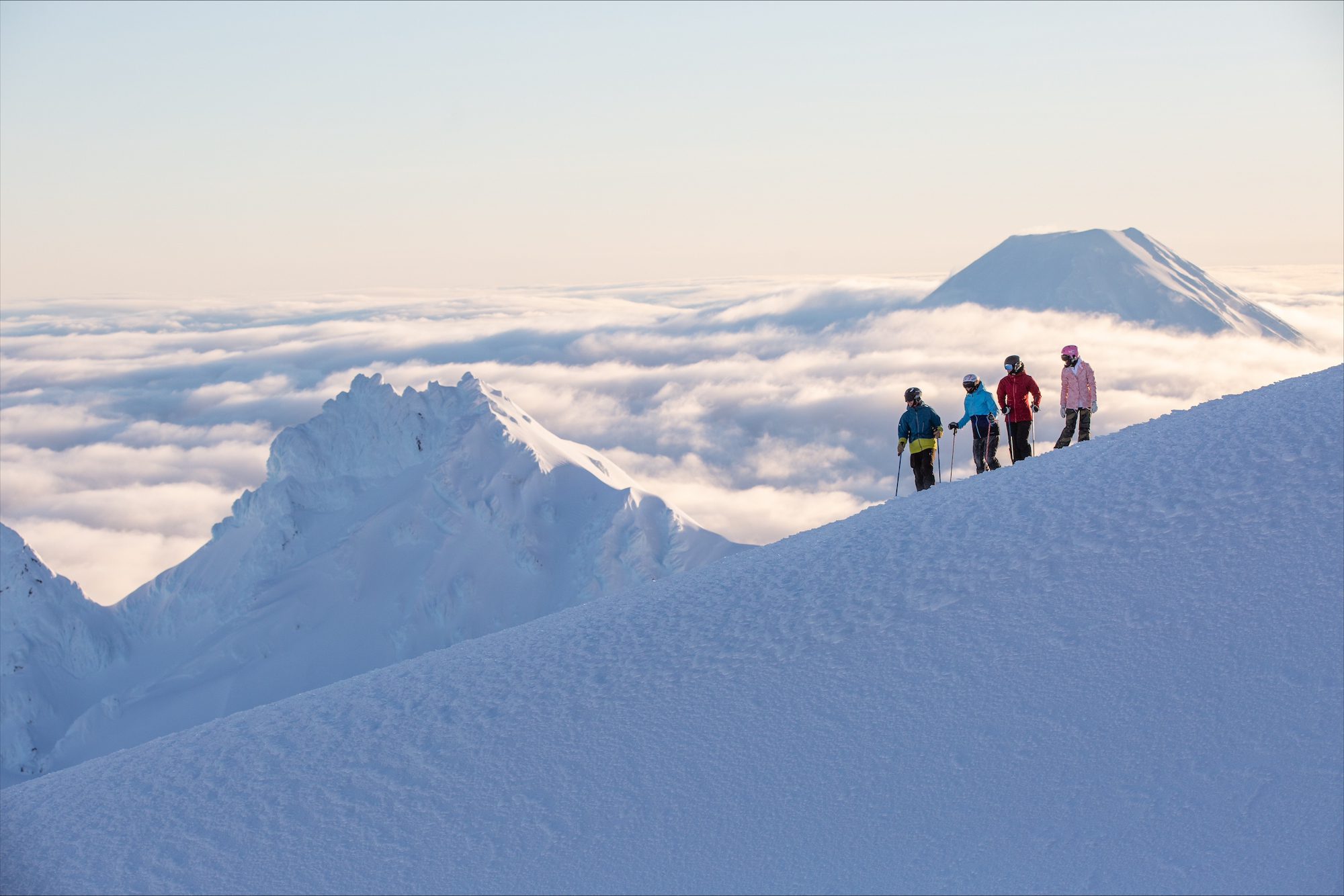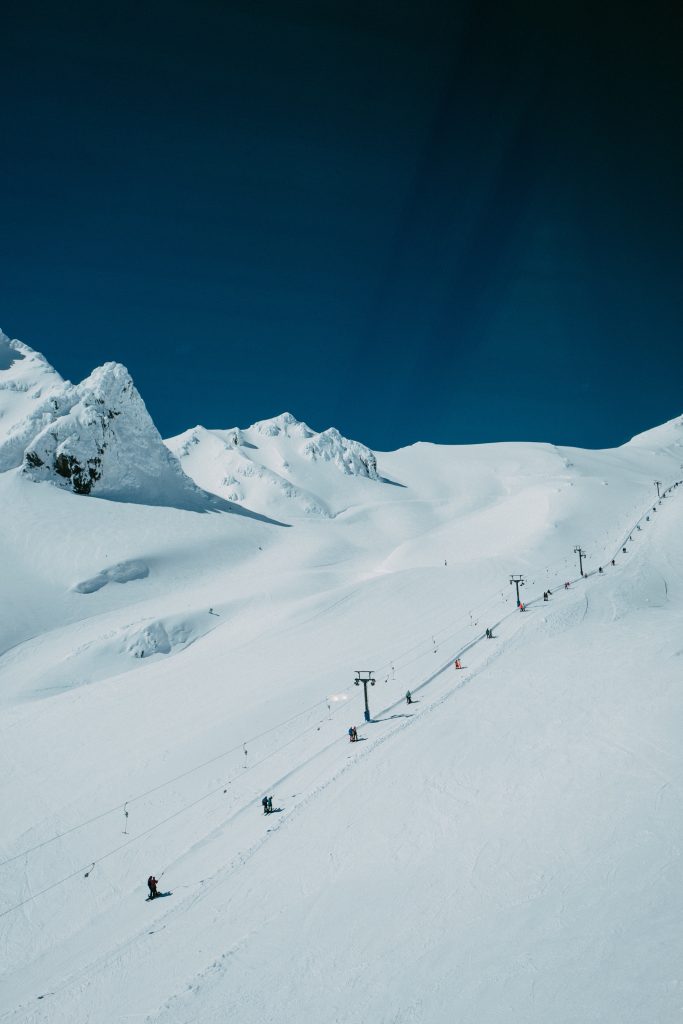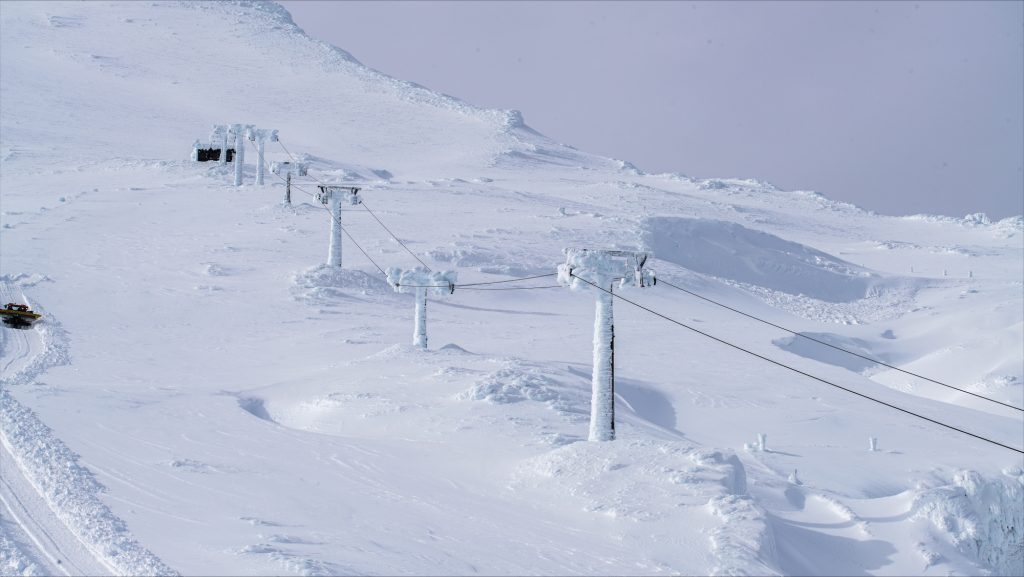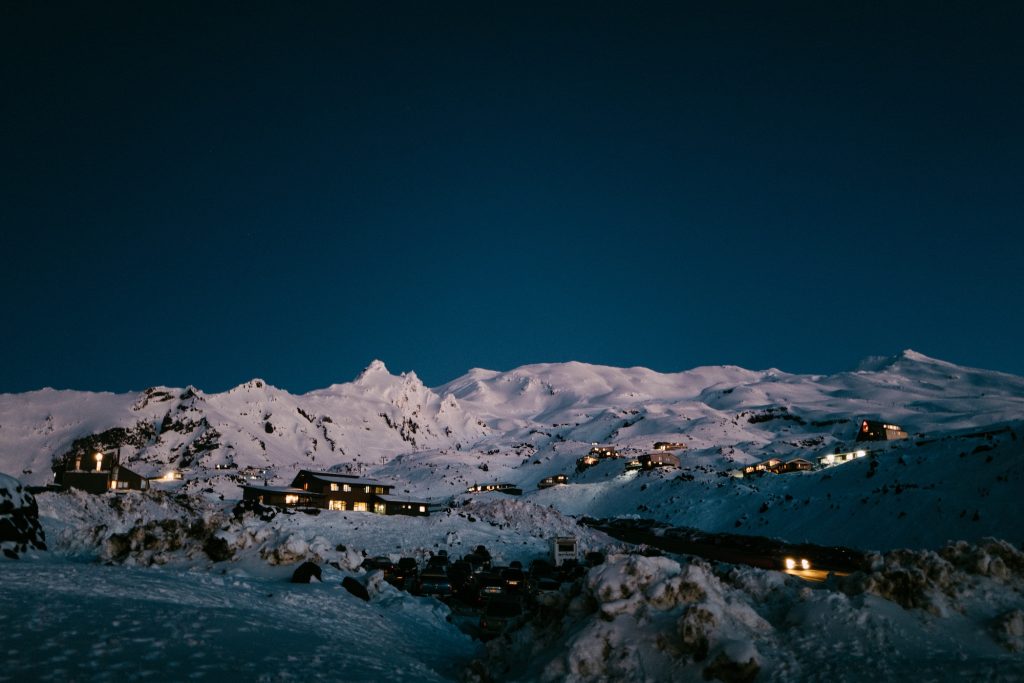If I had to list my relationship status with Mt Ruapehu on Facebook it would almost certainly be: “it’s complicated”.
Despite its location smack bang between New Zealand’s two major population centres of Auckland and Wellington, the heaving volcano has usually played second snow fiddle to its cousins across the Cook Strait. Rising from the Central Plateau like a battered Ikea tabletop, it is flanked by Tongariro and Ngauruhoe but still seems lonely in comparison to the 500km spine that is the Southern Alps.
Yet its charms are many. A magnet for all kinds of weather, its good years still invariably deliver enough snow to make it the best place to ski or snowboard on the planet from mid-September to October. While other mountains on our half of the globe are calling last rites on their season, Ruapehu is often just coming into its own. Sure, real powder days may be rarer than glowing social media comments about Whistler gondola line-ups, but when the base is big here, so are the opportunities.
My fondest recollections of the mercurial North Island ski area stem back to seasons in the early noughties with sunny September days and three metres of snow on the ground. One day I’d be hitting the Turoa side and the south-eastern faces running under the Mangaehuehu Glacier, punching out short turns on its 35-degree slopes. The next it would be off to Whakapapa, eyeing off cliffs and chutes of the Pinnacles but never usually being brave enough.
The best afternoons would invariably end up on the Far West T-bar, taking a methodical 40 minute hike up to the ridge line; the big reveal being the apple-green waters of Crater Lake. The pinball ride back down delivered more than one kilometre of vertical and would always make the first Monteith’s taste that much sweeter.
- Whakapapa. Photo credit: Matthew Buchanan/Unsplash
- When the snow is on. Photo credit: Mt Ruapehu
- Whakapapa. Photo credit: Matthew Buchanan/UnSplash
As far as Ruapehu was concerned, it would be a while between drinks for me after that. A couple of hours on the hill in between mountain biking (another strength of the region) about a decade later was all the time I’d spent at the mighty massif until last year.
In terms of comebacks, this wasn’t exactly Brendan Fraser in The Whale. If I’m being honest, it wasn’t even Ben Stiller in Zoolander II. As the weather gods offered cheeky top-ups down south, every storm that arrived north seemed to be wet and warm. If Huey did deliver anything of note it would be quickly retracted.
I did punch out a few lazy turns off the Whakapapa Sky Waka Gondola on what turned out to be a glorious winter’s day, but the truth was, this was the toughest of seasons where off-mountain pursuits ruled the way.
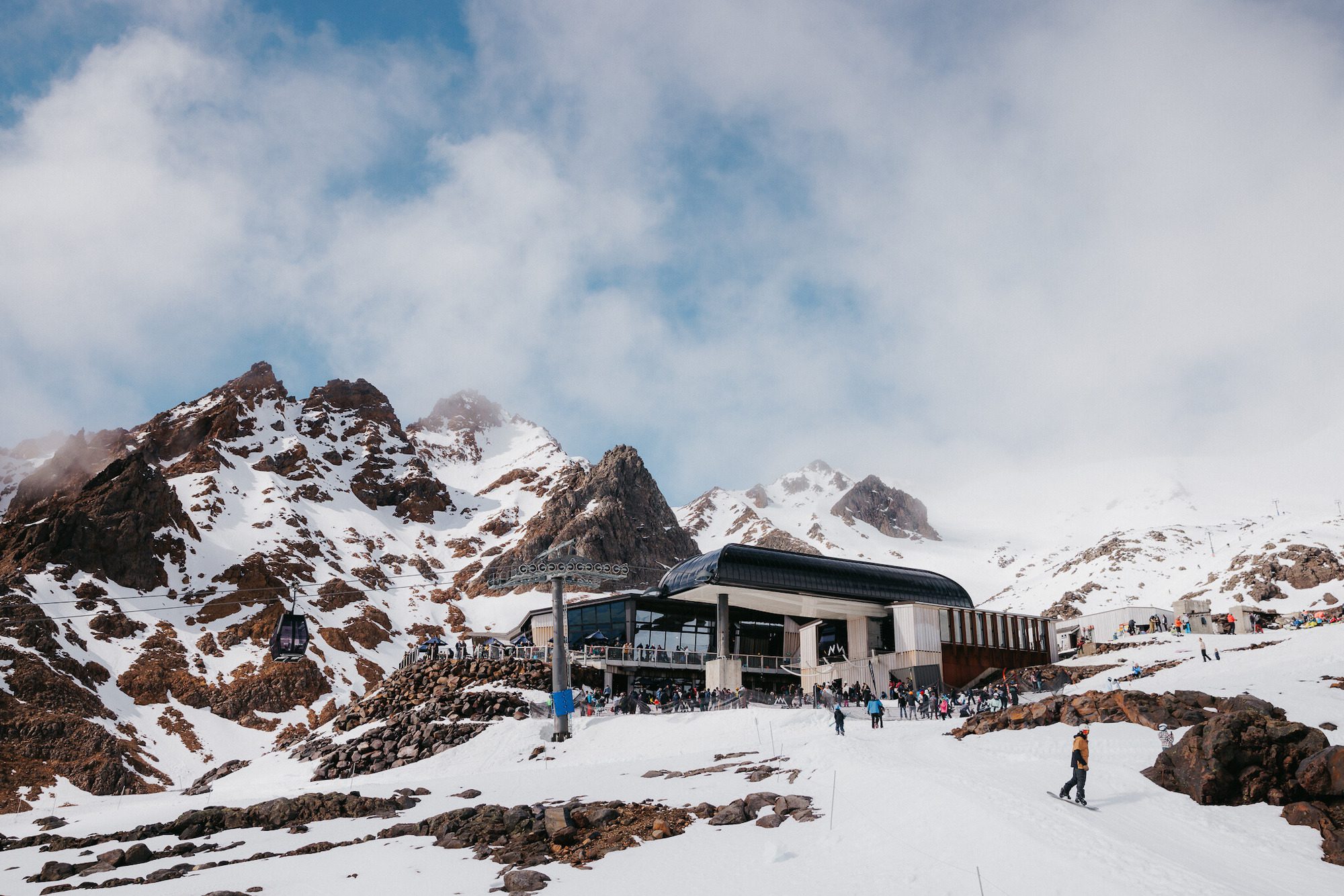
I supped on surprisingly satisfying carrot margaritas at Kings pub in Ohakune, rode a bike for two days on a stunning cut trail through some of the country’s oldest forests and momentarily recaptured my youth at the Powderhorn Chateau (where Peter Jackson and the crew from Lord of the Rings stayed, no less). But in ski land, it does come down to the skiing and tough seasons have their consequences.
Shortly after I left a third of staff at the mountain were sent packing. Bad enough, but really just the start. Off the back of a few COVID-19 ravaged seasons, the volcano which famously blew its lid in 1995, 1996 and 2007 was about to spill its guts financially.
Ruapehu Alpine Lifts, the not-for-profit organisation which manages the Whakapapa and Turoa Ski areas, appointed voluntary administrators by October with debts of tens of millions of dollars. Then the iconic Tongariro Chateau – the glorious, almost century-old art deco hotel that sits at the base of the mountain, also shuttered its doors.
The pain felt in the community and economic flow-on effects have been palpable.
While the mountain is scheduled to be open for business in 2023, the full details of just what that entails remains to be seen.
Just as we went to press (June 1) local Kiwi media reported that the government was set to accept bids for Turoa and Whakapapa to be run by two different companies. Pure Turoa is in the box seat for that side of the hill while a private equity firm with links to former Ruapehu boss Dave Mazey is set to take over Whakapapa.
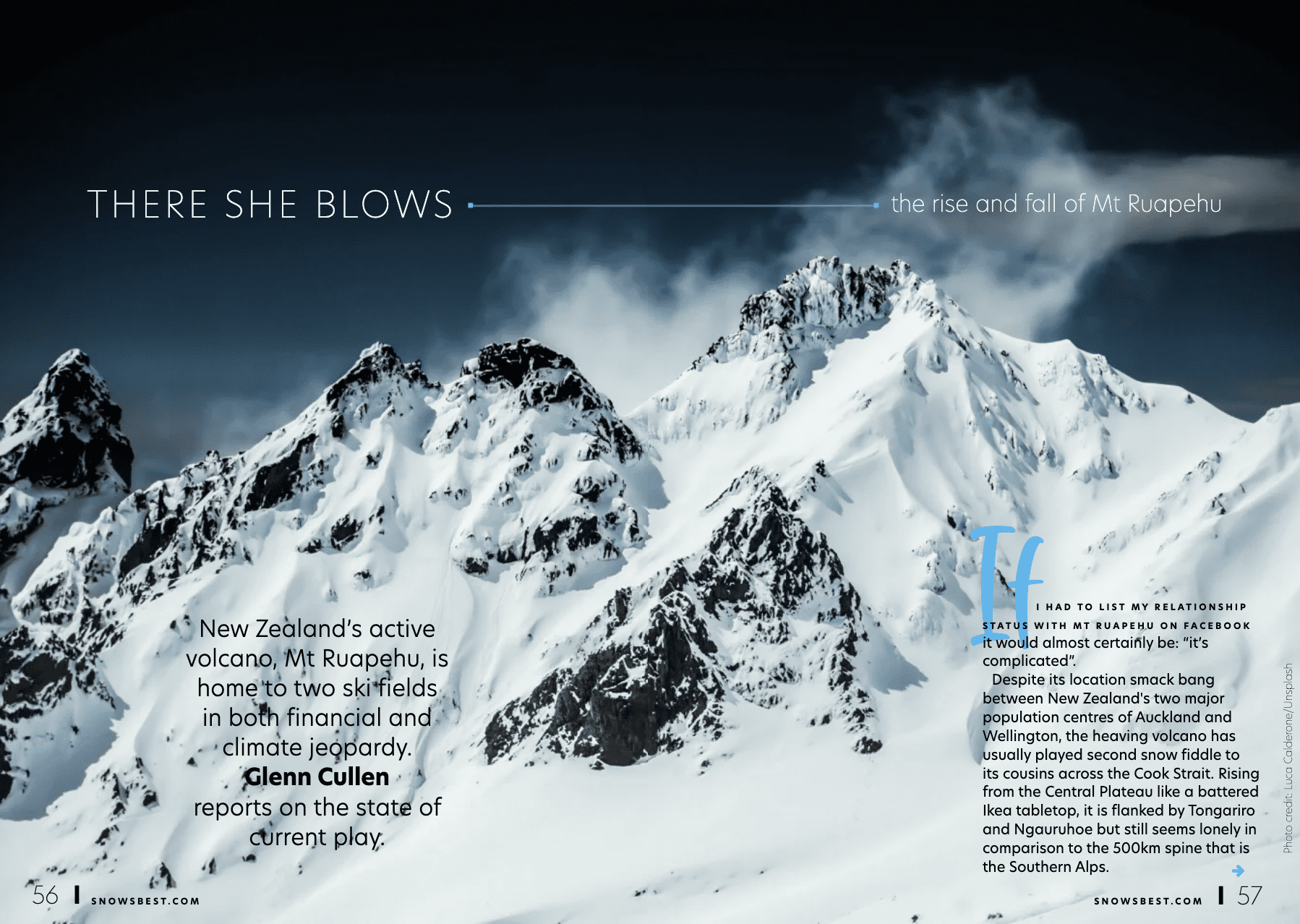
Out in the cold is a group calling itself The Ruapehu Skifields Stakeholders Association. Keen to continue seeing the resort run as a not-for-profit enterprise, the body had heavy hitter Peter Hillary, son of the legendary Sir Edmund as patron.
But their vision of crowdfunding apparently didn’t appeal to the bean counters, who were undoubtedly wary after the previous similarly modelled stewardship managed to rack up huge debts.
The massive plus is that it seems very likely that both sides of the mountain will be operating in some capacity this season. However, plenty of detail remains. Creditors have to sign off on the deal and then there’s a raft of negotiations with the Department of Conservation, iwi (Maori tribes) and other stakeholders yet to take place. With a good blanket of snow already in the area and winter just around the corner, it’s unclear how new operators would be in a position to take over so quickly.
Then there’s the curly question of what happens to the 14,000 Mt Ruapehu lifetime passholders who helped finance the mountain under the previous ownership. They may be about to discover that lifetimes don’t in fact last all that long.
Ultimately Mt Ruapehu and its surrounds will never be Queenstown – but nor should it aim to be. It’s a fantastic, frustrating, complex and charismatic mountain that, on its day, can offer the best in-bound riding of any individual mountain in New Zealand. You’re entitled to see where the pennies and snow land this year, just be sure to keep the relationship with Mt Ruapehu open – there’s a whole mountain community relying on you.
Read the full FREE 84 page e-mag, The Southern Issue, dedicated to skiing and snowboarding in the southern hemisphere.
